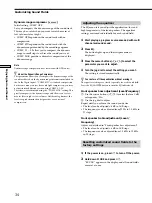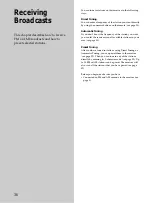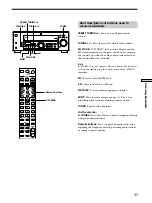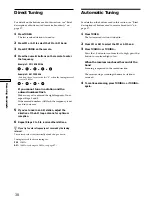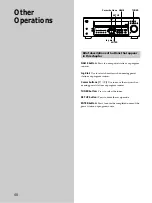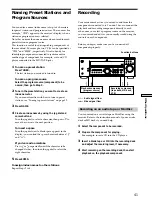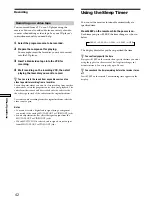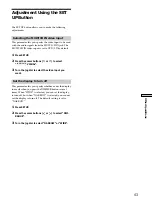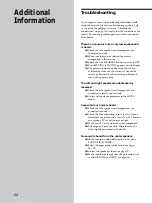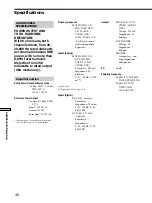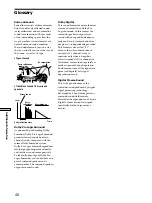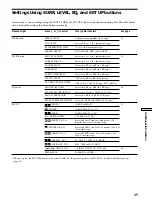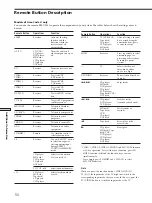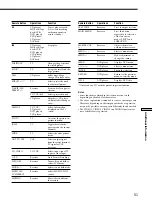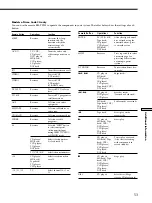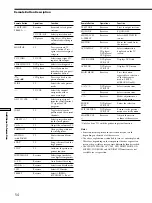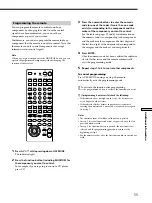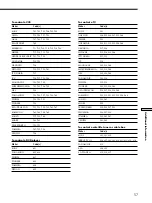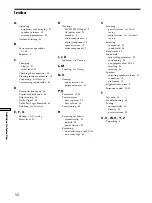
48
Additional Information
Glossary
Surround sound
Sound that consists of three elements:
direct sound, early reflected sound
(early reflections) and reverberative
sound (reverberation). The acoustics
of the surrounding space affect the
way these three sound elements are
heard. Surround sound combines
these sound elements in such a way
that you actually can sense the size of
the venue, as well as its type.
• Types of sound
• Transition of sound from surround
speakers
Dolby Pro Logic Surround
As one method of decoding Dolby
Surround, Dolby Pro Logic Surround
produces four channels from two-
channel sound. Compared with the
former Dolby Surround system,
Dolby Pro Logic Surround reproduces
left-to-right panning more naturally
and localizes sounds more precisely.
To take full advantage of Dolby Pro
Logic Surround, you should have one
pair of surround speakers and a
center speaker. The surround speakers
output monaural sound.
Dolby Digital
This sound format for movie theaters
is more advanced than Dolby Pro
Logic Surround. In this format, the
surround speakers output stereo
sound with an expanded frequency
range and a sub woofer channel for
deep bass is independently provided.
This format is also called “5.1”
because the sub woofer channel is
counted as 0.1 channel (since it
functions only when a deep bass
effect is needed). All six channels in
this format are recorded separately to
realize superior channel separation.
Furthermore, since all the signals are
processed digitally, less signal
degradation occurs.
Digital Cinema Sound
This is the generic name of the
surround sound produced by digital
signal processing technology
developed by Sony. Unlike previous
surround sound fields mainly
directed at the reproduction of music,
Digital Cinema Sound is designed
specifically for the enjoyment of
movies.
Reverberation
Direct sound
Early
reflections
Reverberation
Early reflection time
Early reflections
Direct sound
Time
Level

